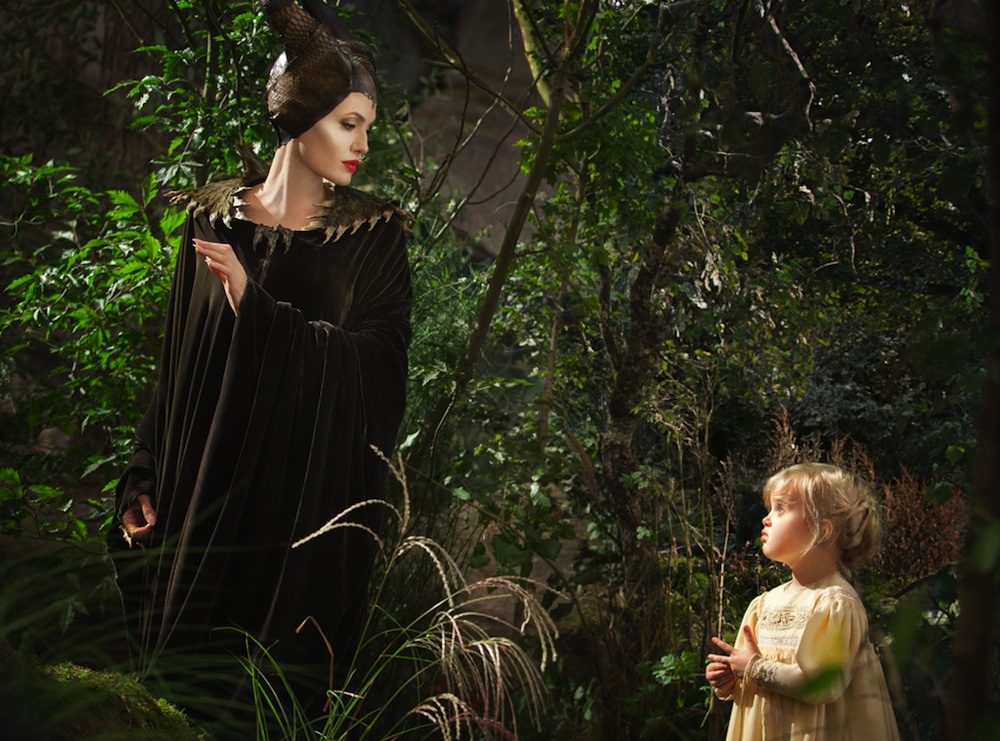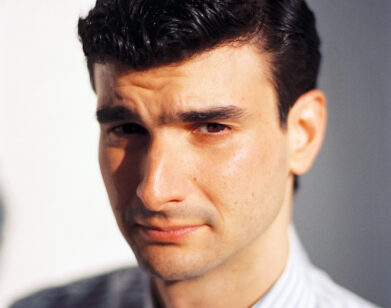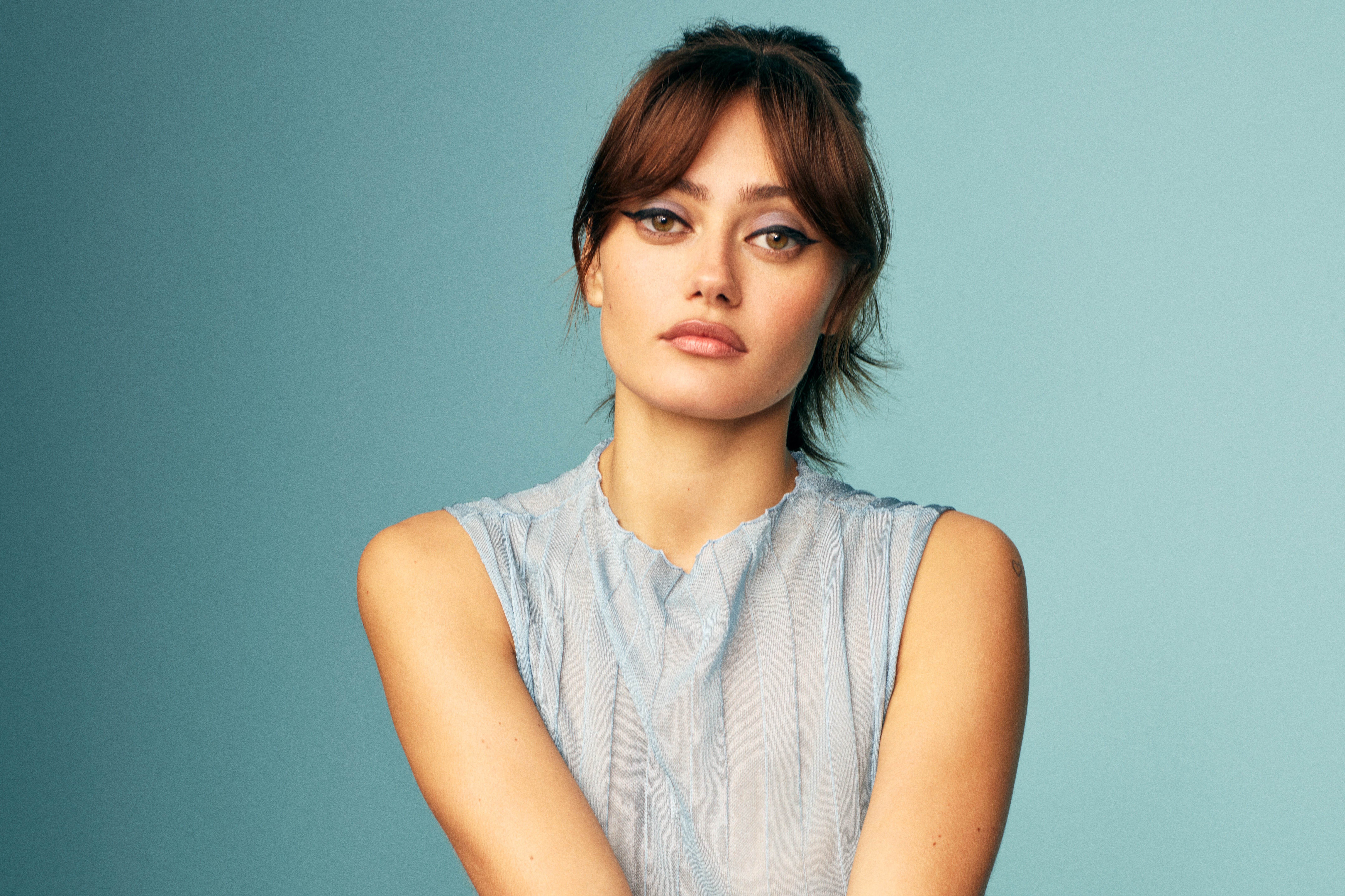Linda Woolverton and the Making of Maleficent

ABOVE: ANGELINA JOLIE AND VIVIENNE JOLIE-PITT IN MALEFICENT
Beauty and the Beast (1991), Homeward Bound (1993), The Lion King (1994), and Mulan (1998) are just some of the films that Linda Woolverton has had a hand in. A screenwriter for over 20 years, Woolverton is one of those behind-the-scenes magicians who rarely gets the credit she deserves. It’s the pitfall of her profession; in spite of her illustrious résumé, Woolverton’s contributions, like those of most writers-for-hire in the film industry, are often overlooked. “It can be difficult,” the California native explains. “You hand off this thing you spent years and years and years making—creating from nothing—to somebody else. It’s a visual medium, and it’s a director’s medium.”
Woolverton is far from unhappy, however. She is proud of all of her films, “even Homeward Bound,” she jokes. “Belle is like my first-born child,” she says of the protagonist of her first Disney film, Beauty and the Beast. “I love Homeward Bound. I loved those characters. I loved writing Alice,” she continues. “Certainly The Lion King became so universal and impactful.”
On Friday, Woolverton’s latest collaboration with Disney, Maleficent, opened in cinemas. The film follows the antagonist of the studio’s 1959 animated film Sleeping Beauty, an embittered fairy who once trusted humans, only to be brutally betrayed. Angelina Jolie stars as the titular character, with Elle Fanning playing Princess Aurora, the target of Maleficent’s wrath, and Brenton Thwaites as Prince Phillip, who functions more as a footnote than a traditional Disney prince. It is the film with which Woolverton has been the most involved. From the very first draft, the writer worked closely with Jolie to shape a protagonist that is “both hero and villain.”
Between writing Maleficent and its release, Woolverton also finished the screenplay for Through the Looking Glass, a sequel to Tim Burton’s 2010 Alice in Wonderland film.
EMMA BROWN: Do you remember your first experience with Sleeping Beauty?
LINDA WOOLVERTON: I do. I was so scared of Maleficent. I was so scared of that bad, horrible witch—I thought she was a witch.
BROWN: The story of Sleeping Beauty existed long before the animated Disney film. How far back into the history of Sleeping Beauty did you go?
WOOLVERTON: We did not really go back to the original fairy tale because this is Maleficent’s story and, in the original fairy tale, Maleficent is barely drawn at all—she’s just an angry fairy that didn’t get invited to the party. Then Disney did their Maleficent, which is what we based this one on. When I was doing Beauty and the Beast, we went back and looked at the original fairy tale a lot. Less so on this one because we were pretty much depicting a character that Disney had created from whole cloth.
BROWN: How did you first get involved with Disney? What led to you writing the screenplay for Beauty and the Beast?
WOOLVERTON: I was writing Saturday morning cartoons for years. I watched a Disney animated movie, I don’t even remember which one, and I remember thinking, “I could do that! Maybe do it better”—arrogantly. I had written a young adult novel and I thought, rather than give them a cartoon that I’d written, I’ll give them this book so they think I’m a serious writer. I took it over there and I left it. Someone read it and called me and said, “We want you to come and work with us.” So that’s how I got over there. Then I wrote a version of Winnie the Pooh. They didn’t make it, but it led to them offering me Beauty and the Beast.
BROWN: What drew you to children’s and YA fiction?
WOOLVERTON: I have a children’s theater background, so I grew up performing for child audiences; it’s sort of my specialty. I know the child audience pretty well—or felt like I did because I performed for them so much. I studied a lot about the child audience, about theater. So it was naturally a place that I gravitated to.
BROWN: What’s the biggest difference between child audiences and adult audiences?
WOOLVERTON: They’re less forgiving. You have to be very conscious of the fact that they’re not going to just accept things; they’re going to question. They’re going to move around if you bore them. They’ll actually leave. [laughs] So you really have to be on your toes. But writing for Disney, I’m not just writing for a child audience. We have to reach everybody—it’s pretty much eight to 80. So you have to embrace all of it, and that’s a very difficult thing to do. You have to offer things for the younger kids and offer things for the adults—not patronize the adults. It’s a complex process.
BROWN: During the writing process, when you’re imagining the characters, do you see them in their animated form or as flesh-and-blood people?
WOOLVERTON: Even when I’m writing animation, I think of them as real people. I think of them as completely three-dimensional beings, even if it’s a talking teapot. I don’t think of them as one-dimensional drawn characters running around. Maybe that’s why, to me, there’s really no difference in writing the two—animation versus live action.
BROWN: How does the drafting process work?
WOOLVERTON: The first draft you’re pretty much on your own, so I love that. I can let my imagination go wild. I just go crazy. Then, over the years—it takes years to write these things, to make these things come to pass—there are many, many, many drafts. For Maleficent, there were at least 15.
BROWN: Was there anything you really had to fight to keep in Maleficent?
WOOLVERTON: Not so much. The challenge was keeping her both things: both the hero and the villain. Really remembering that she’s still a villain, even though we have to empathize with her and understand her plight. To walk that line was the biggest challenge.
BROWN: Did you lean more towards one side in your first draft?
WOOLVERTON: I did. I leaned towards the sympathetic side. I had to push that side in order to discover the character. Angelina was always like, “She’s a villain, don’t forget that.” So we had to pull her back to her [aspects of] wicked villainry.
BROWN: Is there a villain in Maleficent?
WOOLVERTON: Yes, [King] Stefan [Aurora’s father] is a villain. He turns into a villain in a dark way.
BROWN: I heard that Angelina’s daughter, Vivienne, played the part of young Aurora because all of the other child actors were too frightened of Angelina in her Maleficent costume. Is that true?
WOOLVERTON: Yes. Her own child wasn’t going to be afraid of her mom, so it had to be Vivienne.
BROWN: I was a little bit worried for Vivienne. There’s a moment when Maleficent is holding her and she says, “I don’t like children.” Vivienne is so young—all I could think was, “I hope she understands it’s not true. I hope that doesn’t scar her!”
WOOLVERTON: I know. [laughs] I hope so too. She’s a pretty strong little girl, though. I think she’s going to be okay.
BROWN: A lot of the films you’ve written are musicals. When you write a movie that is going to have songs throughout it, do you give the script to the songwriters and then they write the songs from that? Or is it the other way around: they give you the songs to work with and you write around them?
WOOLVERTON: It works together. It’s a big process: the songwriters and the screenplay writer have to create the moments for the songs to be. You have to leave the space for the songs, and it’s supposed to move the story forward. So it’s really important that you work together.
BROWN: So something like “Hakuna matata” in The Lion King—how did that come about? Who came up with the phrase?
WOOLVERTON: “Hakuna Matata” came about later. It wasn’t essential to the plot, but it had to be a song for when Simba was in his “lost boy” phase; when he was just lollygagging through life. It was wonderful to find that song. We weren’t expecting it, really. It just arrived.
MALEFICENT IS IN THEATERS NOW.






